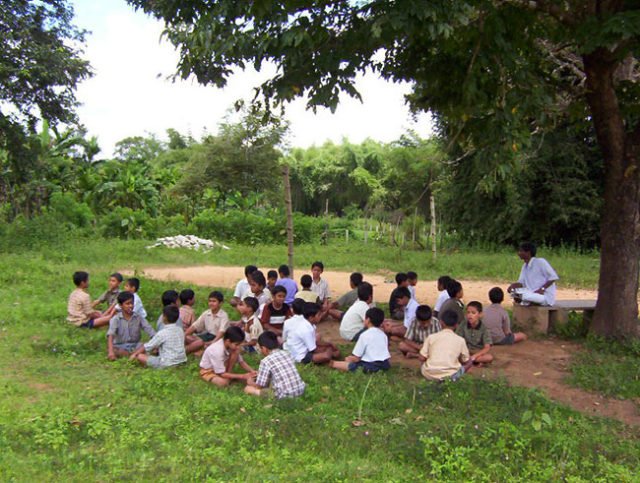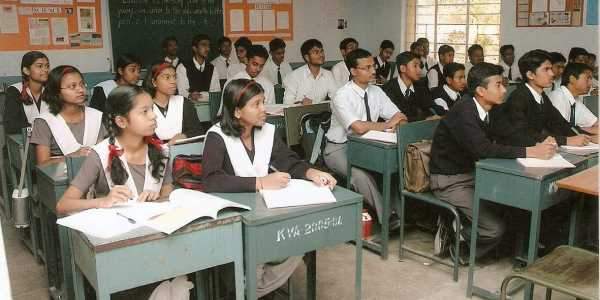Let’s begin with a question.
Do you believe that India has always been segregating boys and girls in schools?
Well, if you answered with a mental “Umm, yeah”, then sorry you’re wrong.
The Traditional Egalitarian Education System Of India
Before the invasion of the British, for hundreds and thousands of years India practiced the gurukul system which comprised of a teacher or guru teaching a bunch of children, both male and female. (The very one which we see in books, of cool children having classes under a banyan tree!)
Knowledge was transferred mostly orally because, of course, it was not a child’s play to hand-write notes for the entire class.

Bifurcation Between Genders In Classroom Began With Colonization
Somewhere in the middle of the 15th century, Johannes Gutenberg invented the printing press. The British introduced the printing press in India so as to maintain a written and authentic account of Indian history and population.
The coming in of Europeans also brought with them their ideologies and practices. Segregation and classification were among them.

Around the 18th and 19th century, Lavoisier classified the elements and Darwin classified species. Thus the idea of classification entered the Indian arena. And hence began the segregation of male and female children in classrooms.
The Current Scenario
The practice of segregation which began during the colonial era is deeply entrenched even today. In educational institutions, boys and girls either voluntarily sit in separate rows and columns or are made to sit so by the teachers.
As a result, a gap arises between the two genders, not just physically, but also in terms of behavior and interaction. Boys interacting with boys, and girls interacting with girls is a common scene we may witness in any school or college.
Also Read: Things I Wish I Knew When I Was A Fresher In DU
Gendered Segregation Taken to Extremes
The most apparent form of segregation of the genders occurs in the form of different schools and colleges for girls and boys.
This became prevalent during the last century. Within this, girls’ schools and colleges are more common. Every year, lakhs of girls enroll themselves in these all-girls institutions.
Parents often presume wrongly that such institutions would prove more beneficial and more of a safe place for their daughters and that, their daughters would remain uncorrupted in their thinking as well as safe from any form of harassment in their schools/colleges.
But these ‘exclusively gendered’ educational institutions do more harm than good.
Children are born without prejudices and vices. It is us, the society that inscribes these notions upon them. We assume that girls and boys may engage in inappropriate behaviour when made to sit or study together.

We assume that they both will be a distraction for each other when in classrooms. So you see the problem lies with what we think and assume, and not with the children themselves.
Having studied in an all-girls school, followed by an all-girls college, I know what negative impact such closed spaces have on a student.
With limited or no interaction and intermingling with the opposite gender, many girls become almost phobic of interacting with boys. There arises not just a physical, but an emotional and social wedge between the two genders due to such institutions.
The need of the hour, therefore, is to encourage more and more parents to get their children enrolled in co-ed schools.
This would facilitate not only a healthy interaction between the two sexes, but also foster trust and minimize existing prejudices in our society as a whole.
Image Source: Google Images
Sources: TedX, The Guardian
Connect With The Blogger: @Rhetorician_rc
You’d Also Like To Read:
Breakfast Babble: Why I Hate The Fact That A Two-Word Picture Has Become Poetry






























